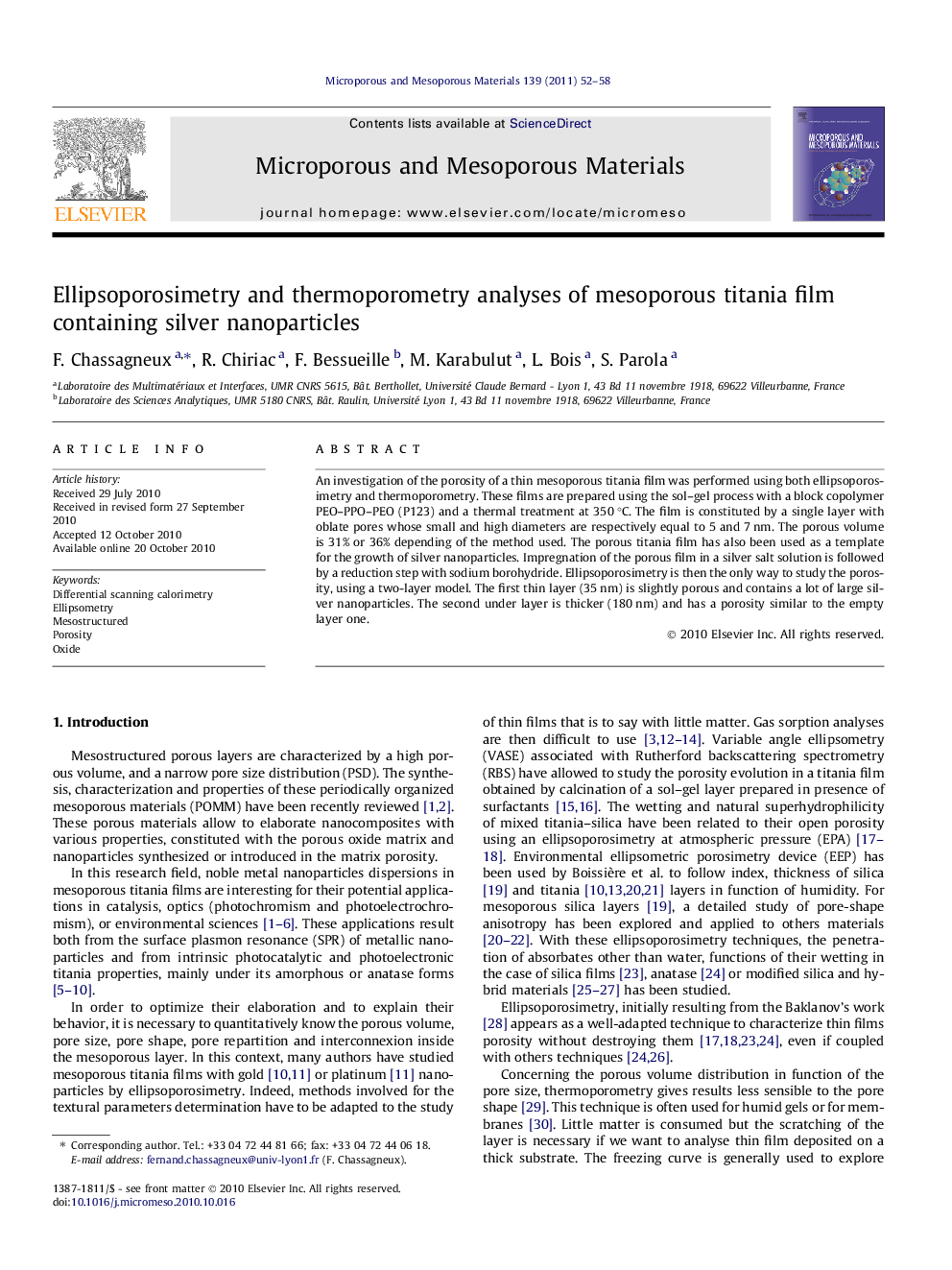| Article ID | Journal | Published Year | Pages | File Type |
|---|---|---|---|---|
| 75001 | Microporous and Mesoporous Materials | 2011 | 7 Pages |
An investigation of the porosity of a thin mesoporous titania film was performed using both ellipsoporosimetry and thermoporometry. These films are prepared using the sol–gel process with a block copolymer PEO–PPO–PEO (P123) and a thermal treatment at 350 °C. The film is constituted by a single layer with oblate pores whose small and high diameters are respectively equal to 5 and 7 nm. The porous volume is 31% or 36% depending of the method used. The porous titania film has also been used as a template for the growth of silver nanoparticles. Impregnation of the porous film in a silver salt solution is followed by a reduction step with sodium borohydride. Ellipsoporosimetry is then the only way to study the porosity, using a two-layer model. The first thin layer (35 nm) is slightly porous and contains a lot of large silver nanoparticles. The second under layer is thicker (180 nm) and has a porosity similar to the empty layer one.
Graphical abstractFigure optionsDownload full-size imageDownload as PowerPoint slideResearch highlights► Ellipsoporosimetry and thermoporometry used to study the porosity of a mesoporous titania. ► Oblate pores whose small and high diameters are equal to 5 and 7 nm. Porous part is around 31%. ► After the silver nanoparticles growth, two layers are found. ► A first thin upper layer (35 nm) contains the nanoparticles. ► A second thicker sub-layer (180 nm) remains porous.
